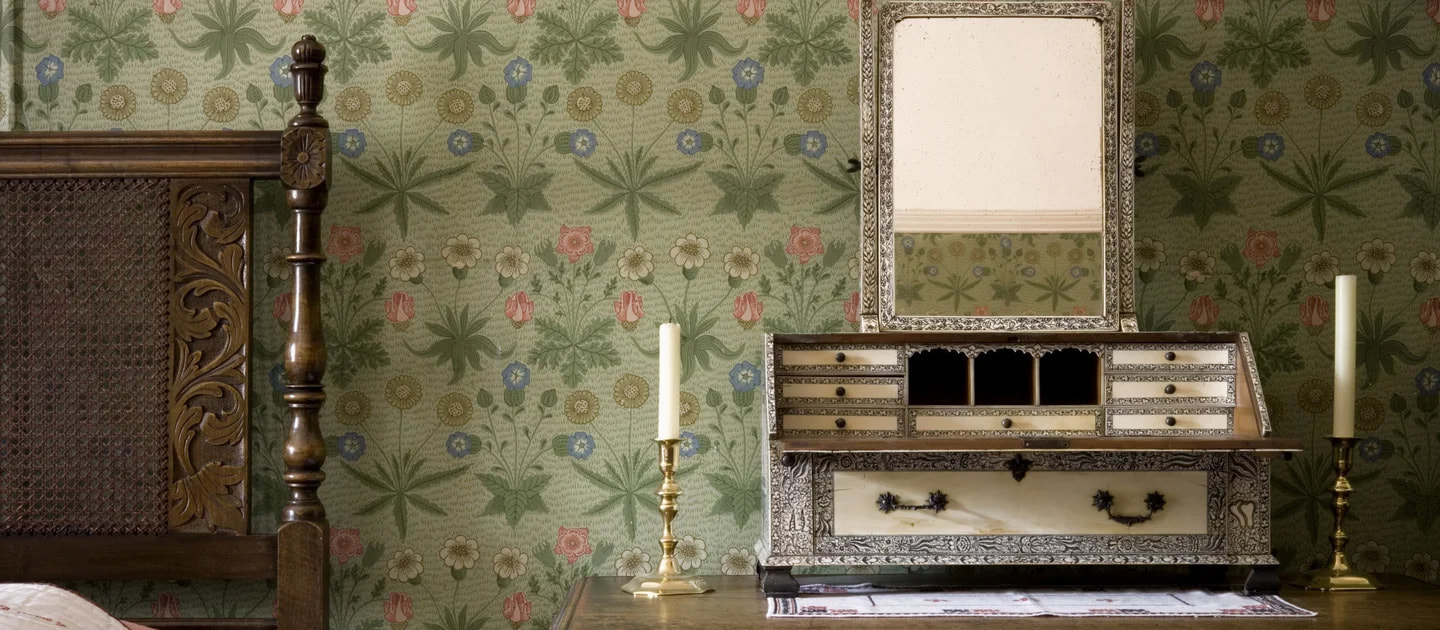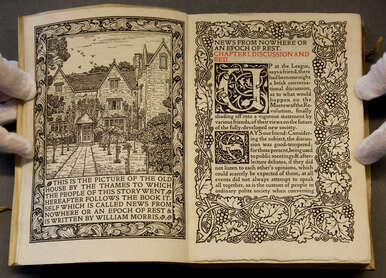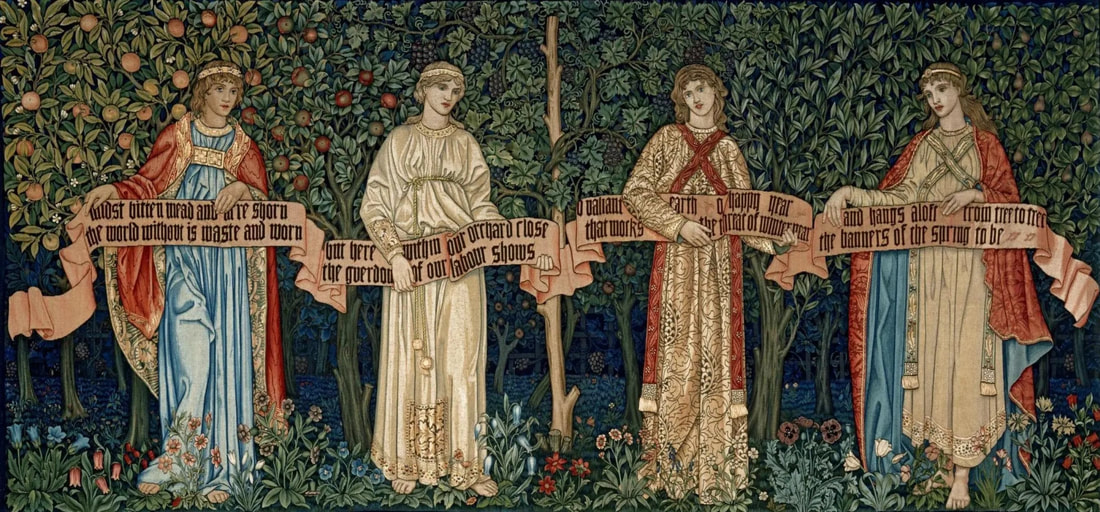William Morris was one of the most influential voices in Victorian art and architecture, and his influence spread far into the 20th century in the form of the Arts and Crafts Movement that he helped spawn.
Morris was born at Walthamstow, Essex, in 1834. and attended Marlborough School, and later, Exeter College at Oxford University. He had planned to enter the church, but reading the social commentaries of Ruskin and Carlyle (among others) led him to the arts instead. While at Exeter he met the artist Edward Burne-Jones, who was to prove a life-long friend.
After graduating from Oxford Morris worked in the architectural offices of George Street, who specialised in the Gothic Revival style, but he soon left to pursue painting under the tutelage of Dante Gabriel Rosetti.
After graduating from Oxford Morris worked in the architectural offices of George Street, who specialised in the Gothic Revival style, but he soon left to pursue painting under the tutelage of Dante Gabriel Rosetti.
In 1859 Morris commissioned Philip Webb, a friend from Street's office, to design him a new home, Red House in Bexley Heath, London. The house was to be built in simple vernacular style using traditional materials.
Morris was annoyed that he could find no good textiles and furniture to decorate his new home, so he decided to design them himself. It was a momentous decision. With friends Burne-Jones, Rosetti, and Webb he formed a small firm, later called Morris and Company, to sell the products they designed.
Under Morris' leadership, the company soon made a name for itself as a high-quality producer of such diverse items as stained glass, wallpaper, textiles, and furniture, often with a floral or foliage motif.
The ideals generated by Morris' efforts went far beyond the success of his company, however. They gave rise to a whole new interest in the medieval period, the Arts and Crafts Movement, and even such later 20th-century ideals as Art Nouveau. Moriss was enormously influential in the late Victorian period as a social reformer and his ideas on the value of simplicity and the importance of the individual craftsperson are still with us today.




